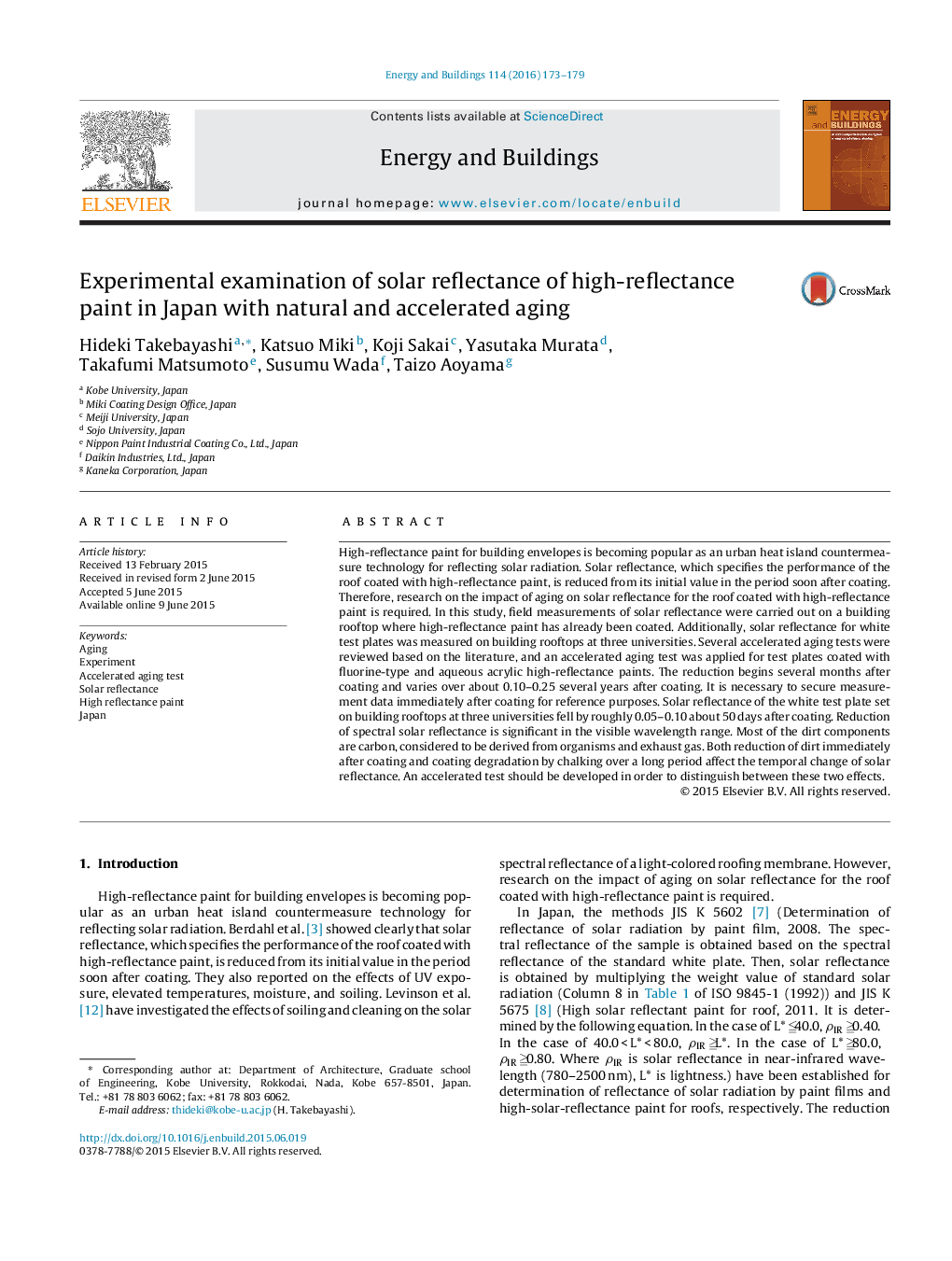| Article ID | Journal | Published Year | Pages | File Type |
|---|---|---|---|---|
| 262130 | Energy and Buildings | 2016 | 7 Pages |
•Field measurements of solar reflectance were carried out on a building rooftop.•Solar reflectance for test plate was measured on three universities building rooftop.•Several accelerated aging tests were reviewed based on the literature.•An accelerated aging test was applied for test plates.
High-reflectance paint for building envelopes is becoming popular as an urban heat island countermeasure technology for reflecting solar radiation. Solar reflectance, which specifies the performance of the roof coated with high-reflectance paint, is reduced from its initial value in the period soon after coating. Therefore, research on the impact of aging on solar reflectance for the roof coated with high-reflectance paint is required. In this study, field measurements of solar reflectance were carried out on a building rooftop where high-reflectance paint has already been coated. Additionally, solar reflectance for white test plates was measured on building rooftops at three universities. Several accelerated aging tests were reviewed based on the literature, and an accelerated aging test was applied for test plates coated with fluorine-type and aqueous acrylic high-reflectance paints. The reduction begins several months after coating and varies over about 0.10–0.25 several years after coating. It is necessary to secure measurement data immediately after coating for reference purposes. Solar reflectance of the white test plate set on building rooftops at three universities fell by roughly 0.05–0.10 about 50 days after coating. Reduction of spectral solar reflectance is significant in the visible wavelength range. Most of the dirt components are carbon, considered to be derived from organisms and exhaust gas. Both reduction of dirt immediately after coating and coating degradation by chalking over a long period affect the temporal change of solar reflectance. An accelerated test should be developed in order to distinguish between these two effects.
